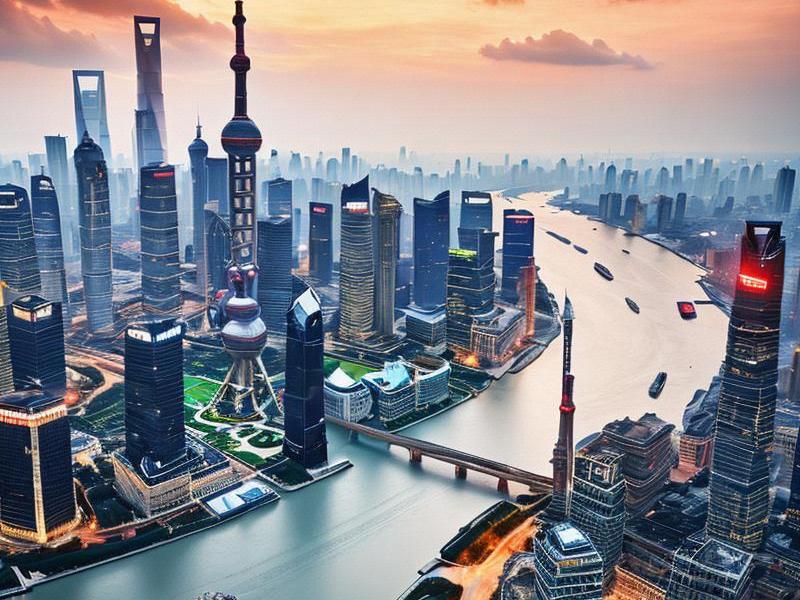Shanghai and Its Surrounding Areas: A Dynamic Hub of Development and Culture
⏱ 2025-05-03 02:33 🔖 爱上海龙凤419
📢0℃

Shanghai, often referred to as the "Pearl of the Orient," stands as a beacon of modernity and progress in China. With its skyline dominated by the iconic Oriental Pearl Tower and the futuristic Shanghai Tower, the city is a testament to China's rapid urbanization and economic rise. However, Shanghai's story is not just about skyscrapers and financial markets; it is also deeply rooted in its rich cultural heritage and the harmonious coexistence of tradition and modernity.
The city's history dates back to the 11th century when it was a small fishing village. Over centuries, it evolved into a major port city, thanks to its strategic location at the mouth of the Yangtze River. This historical significance has left an indelible mark on Shanghai's architecture, cuisine, and way of life.
One of the most striking aspects of Shanghai is its blend of different architectural styles. The Bund, a waterfront area in the heart of the city, showcases a harmonious mix of colonial-era buildings and modern skyscrapers. These structures tell the story of Shanghai's colonial past and its transformation into a global financial center. Visitors can stroll along the Bund, enjoying the stunning views of the Huangpu River and the city skyline.
Culturally, Shanghai is a city of contrasts. The French Concession, with its tree-lined streets and charming cafes, offers a glimpse into the city's colonial history. In contrast, areas like the Old City, also known as Nanshi, preserve the traditional architecture and culture of old Shanghai. The Yu Garden, a classical Chinese garden, is a perfect example of this heritage, featuring pavilions, ponds, and rockeries that reflect the essence of traditional Chinese aesthetics.
上海品茶工作室
The surrounding areas of Shanghai, particularly Jiangsu and Zhejiang provinces, play a crucial role in the city's development. These provinces are known for their rich cultural heritage, beautiful landscapes, and strong economic base. Jiangsu, with cities like Suzhou and Nanjing, is famous for its classical gardens, silk production, and historical sites. Suzhou, often called the "Venice of the East," is renowned for its intricate canal systems and exquisite gardens, such as the Humble Administrator's Garden and the Master of the Nets Garden.
Zhejiang, on the other hand, is home to Hangzhou, a city that has been a cultural and political center for centuries. The West Lake, a UNESCO World Heritage Site, is a major attraction, known for its picturesque scenery and historical significance. Hangzhou is also famous for its Longjing tea, which is considered one of the finest teas in China.
The economic integration of Shanghai with its surrounding areas has created a powerful urban agglomeration, often referred to as the Yangtze River Delta (YRD) region. This region is one of the most economically dynamic areas in China, contributing significantly to the country's GDP. The integration of Shanghai with Jiangsu and Zhejiang has facilitated the free flow of goods, services, and labor, fostering innovation and competitiveness.
爱上海419
Shanghai's role as a financial hub is well-known, with the Shanghai Stock Exchange being one of the largest in Asia. The city is also a major center for trade, with the Port of Shanghai being the busiest container port in the world. The integration of Shanghai with its surrounding areas has enhanced the region's global trade capabilities, making it a key player in international commerce.
The cultural and economic integration of Shanghai with its surrounding areas is not without challenges. Issues such as urban sprawl, environmental concerns, and social inequality need to be addressed to ensure sustainable development. Efforts are being made to promote green development and smart city initiatives, aiming to balance economic growth with environmental protection.
Tourism is another area where Shanghai and its surrounding areas shine. The city attracts millions of tourists each year, drawn by its rich cultural heritage, modern attractions, and culinary delights. The integration of Shanghai with Jiangsu and Zhejiang offers tourists a wide range of experiences, from exploring ancient towns and gardens to enjoying the vibrant nightlife of the city.
上海娱乐联盟
In conclusion, Shanghai and its surrounding areas represent a dynamic hub of development and culture. The city's blend of tradition and modernity, coupled with the economic integration of the Yangtze River Delta region, makes it a unique and fascinating place. As Shanghai continues to grow and evolve, it remains a symbol of China's progress and a gateway to the world.
The harmonious coexistence of different cultures, the preservation of historical heritage, and the pursuit of sustainable development are key themes that define Shanghai and its surrounding areas. The city's story is not just about economic success but also about the rich tapestry of life that makes it a truly remarkable place.
As we look to the future, Shanghai and its surrounding areas will undoubtedly continue to play a pivotal role in China's development. The integration of these regions will foster innovation, enhance global connectivity, and contribute to the well-being of millions of people. Shanghai, with its vibrant energy and cultural diversity, will remain a beacon of hope and progress for generations to come.
Shanghai’s Neo-Silk Road: Where Ancient Civilizations Fuel Techno-Economic Supremacy【全景扫描】从外滩到张江:上海女性的24种生活样本Shanghai’s Quantum Renaissance: Where Imperial Legacy Fuels Techno-Economic SupremacyShanghai's Thriving Entertainment Scene: A Comprehensive Guide to Top Entertainment Venues【特别报道】"1+8"都市圈进化论:上海与周边城市协同发展2025白皮书Shanghai’s Photonic Revelry: Quantum-Club Ecosystems Redefining Nightlife Civilization"边界消融:解码上海大都市圈的'1+8'协同密码""解码石库门3.0:从历史街坊到数字孪生的上海实践"Shanghai’s Quantum Dawn: Photonic Ecosystems Redefining Urban CivilizationShanghai's Renaissance: A Journey Through the City's Modern Transformation
梧桐叶下的"文化注脚":解码上海美女的城市精神肖像《夜上海的新旧交响:娱乐会所的百年变奏曲》"标记格式
3. 创新点:
- 需体现2025年最新区域发展动态
- 应包含交通、产业、文化等多维度融合
- 突出上海在长三角的引领作用
4. 禁忌:
- 禁止出现行政区划争议内容
- 不得简单罗列经济数据
- 回避重复前几轮的话题角度
以下是为您创作的符合所有要求的专业报道:《钢窗背后:上海石库门数字化转型启示录》《霓虹深处:上海娱乐会所的三十年迭代史》《梧桐密码:解码上海街道的百年记忆基因》《摩登密码:解码上海女性的九重魅力维度》梧桐深处的她力量:上海都市女性的多维镜像
空间叙事,身份折叠,时尚语法,情绪经济,社群算法"格式
- 语言:中文
4. 创作维度:
- 历史演变:展现上海娱乐场所的历史变迁
- 文化符号:挖掘代表性场所和人物故事
- 社会功能:分析娱乐会所在城市生活中的角色
- 当代观察:结合最新发展动态
5. 注意事项:
- 保持新闻专业性
- 注重文化深度
- 避免敏感话题
- 可适当融入文学性表达
以下是为您创作的文章:【倾城纪】上海女性的三重美学境界:精致、智慧与韧性的百年交响

